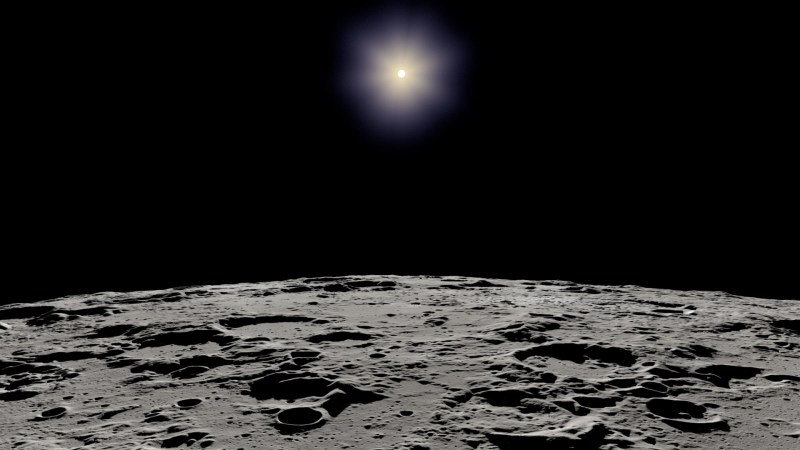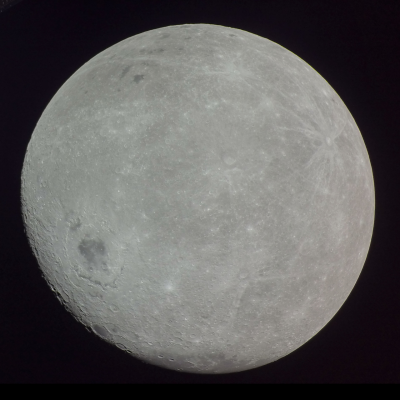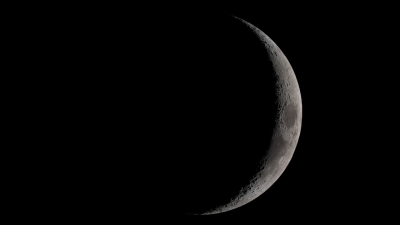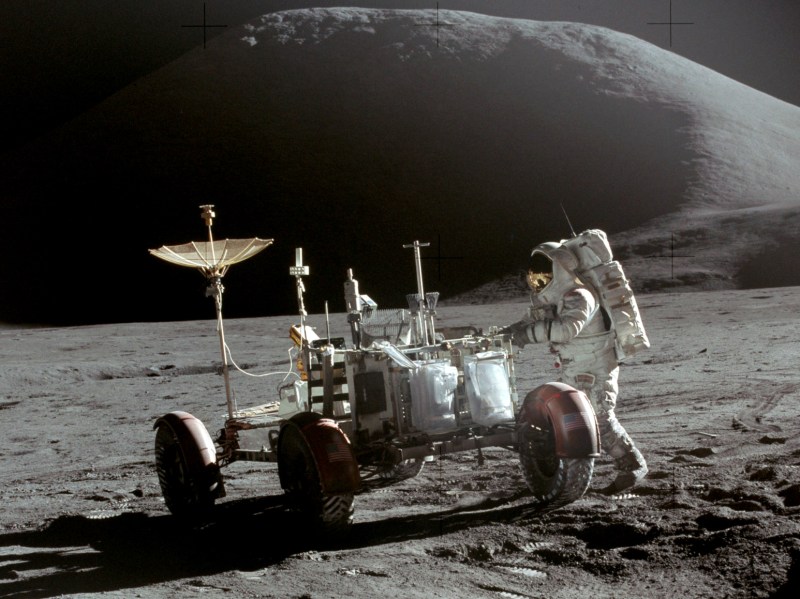We’re looking to go back to the Moon. Not just with robots this time, but with astronauts, too! They’ll be doing all kinds of interesting things when they get there. Maybe they’ll even work towards establishing a more permanent presence for humanity on the lunar surface, in which case they’ll have to get up in the morning, eat breakfast, and get to work.
This raises the question—how does time work on the Moon? As simple as they can be down here, Earthly days and years have little meaning up there, after all. So what’s going on up there?
Tick Tock
On Earth, we have a great many time zones. At current count, they number around 40 or so. Officially, they’re pegged by their offset from Greenwich Mean Time. Some jurisdictions use offsets on a half-hour or quarter-hour, though the majority stick to whole hours for simplicity.
Why do we have all these time zones? It’s because humans like to peg their days to local solar conditions. We want 12 o’clock midnight to be roughly the middle of the night, and we want the sun roughly overhead at noon. Thus, we select time zones that enable this so our days make sense in line with our clocks. The numbers we assign to any given hour are ultimately arbitrary; the universe doesn’t care if we think it’s 9 o’clock or 37 o’clock. We’ve just got it set up how we like it, in a way that works for our societies.
On the Moon, all that becomes largely meaningless. It’s not subject to the same day/night cycle as the Earth, because it’s a wholly separate celestial body that’s up there doing its own thing. In light of that, the simplest answer is to simply use a convenient Earth time zone for timekeeping on Moon missions.

That’s all well and good for short operations, or those involving robots, to a degree. For example, the Apollo missions didn’t care much about “Moon time.” With missions lasting a day at most on the surface, they weren’t on the Moon long enough for day/night cycles or their circadian rhythms to be a major concern.
If humanity is to establish a permanent presence on the Moon, though, things get more complicated. Our bodies tend to like operating on a 24 hour schedule. Our sleep can get messed up if we don’t observe typical day/night cycles, and that can lead to fatigue, health, and performance issues. Thus, it could be of great importance for a Moon colony to schedule its operations around local conditions.
There’s also the prospect of establishing a satellite navigation system for the Moon, similar to GPS and Galileo on Earth. The ESA has proposed the Moonlight initiative, which aims to provide navigational coverage for astronauts on the Moon with lunar-orbiting satellites. Satellite navigation is strongly dependent on accurate time keeping, so the question will be what timebase will the satellites run on?

The Moon’s rotation isn’t much help here for generating a day/night cycle: It only rotates once for every 29.5 Earth days. Moon days are weeks long, followed by nights on the same timescale. Don’t be confused by the concept of the “dark side of the Moon,” either. That’s more about how part of the Moon isn’t visible from Earth. It’s more correctly termed the “Far side of the Moon,” because it gets just as much sunlight as the near side.
Given the lighting conditions on the Moon, there’s little hope for creating Earth-like solar time zones. Instead, space agencies would likely declare that astronauts should stick to one Earth time zone, and ignore local solar conditions. Given that humans couldn’t reasonably stay up for the light part of a full Moon day anyway, this could be a fine solution. Any given group of astronauts could choose the time zone most convenient for working with their support teams back home on Earth. For example, Indian crews may wish to stick to India Standard Time, while NASA’s astronauts would probably prefer to stay on Central Time with Mission Control in Houston. In these cases, crews would likely use strict schedules and perhaps even light assistance to maintain Circadian rhythms. This is already typical protocol on stations like the ISS.

There could still be some value in establishing a system of Moon time, though. Astronauts would still need to track the local day-night cycle in different regions, as this would have all kinds of impacts on local operations. It could be that the Moon is divided up into a series of 12 or 24 regions, each of which is given a day that’s 24 “Moon hours” long. When planning work in a given area, astronauts could check the local Moon time to determine whether their work will occur at day or night.
It’s easy to imagine overlaying local Moon time and a home Earth time zone on a calendar or planning app of some kind. Thus, if you know you’re heading to a given region at Moon midday, local Moon time, you know you’ve got at least 8.125 Earth days of sunlight before you get to the local dark time. Converting between this and the astronaut’s chosen 24-hour home time zone would become a perennial bugbear, but a necessary part of living and working on the Moon.
For most of us reading this, we needn’t worry too much about Moon time. Launch technologies are still primitive enough that few if any of us will ever trod the lunar soil. For our children’s children, or their children, though, it could be a big deal. They’ll be planning moon raves in disused ice mines that kick off at the dead of midnight, Far Side Lunar Time (FSLT). They’re going to have a ball.

















You use a Lunar calendar. Duh doy!
you will have to do this when you start building ag domes. of course plants like to see night, so the domes would have to come with some shades to simulate night periodically. and grow lights for the long night, and power supply for same since you cant use solar. of course this might be different for other kinds of plants than those which i am most familiar with. *bong sounds*
That for me would be the biggest challenge when it comes to explore new planets, healthywise. Unless of course we start adapting, generation after generation, to the local conditions (which I think is unlilkely).
Ironically, the circadian rhythm thing is, AFAIK, the only thing that’s hospitable about Mars. Radiation, the lack of atmosphere, no food, insufficient water, the horrible temperatures, and the sandstorms…. at least you’ll be able to get a good night’s sleep.
Does it matter if you are forced to live underground? You would be making an artificial rhytm anyway.
I say ‘would’ because it’s simply not going to happen that we colonise Mars.
Addendum: Where I said ‘we’ I should have said ‘The US’, let’s be real here, I doubt anybody else thinks it’s a realistic concept to live there, China almost laughs at the concept; pointing out it’s not practical for humans to go live there.
And yes it’s theoretically possible to send robots to dig underground shelters and to spend untold trillions building an actual shielded spaceship with a rotation to have artificial gravity on the trip. But those are not the plans mentioned. Even Musk who is the driving force calls his/the plans as it stands ‘a suicide mission’ .
Agreed, but which timezone? Probably the one of the launchsite/control-center I suppose right?
And if other nations make bases too you could have different timezones next to eachother, but it would not matter of course, unless they want to meet for lunch or dinner. And if the Indians are there some Americans and Chinese for instance might want to get some Indian food from time to time :)
So perhaps go for UTC after all?
I expect the EU would use CET which is UTC+1.
Or UTC+2 during DST :)
Nobody ever heard of Universal coordinated time? Usa military uses it all over the world. Could even use greenwich time. Why invent something new?
UCT is used on earth where there is a 24 hour day. Outside of it and into other planets, where days last much longer (or much shorter) UCT doesn’t apply. These are different things.
People leave in polar areas with day and night lasting days. I work on a vessel where shifts are 11-23 and 23-11 (sometimes we need to switch between shifts) and I change time zone +/-6h every month. Sure you will find people to whom 1 hour day saving adjustment every half year is biological shock but will such people be fit enough for space exploration?
Well, we are not talking highly specialized and trained people here… we are talking general population (in the future, of course), so “fit enough” may be a too harsh requirement
Long term living on the moon will be mostly under at least 5 meters (~16′) of lunar regolith to provide as much protection as the earths atmosphere provides. But since the moon has no magnetic field to move charged particles to the poles and no thermosphere (∼85 to ∼500 km ; ~53 miles to ~310 where High-energy X-rays and UV radiation from the Sun are absorbed and converted into heat, the protection above the residents on the moon will probably need to more.
So if people are mostly going to living under the surface for safety, using earth time makes a lot of sense.
America will probably pick one of its 4 timezone (UTC-10:00, UTC-07:00, UTC-06:00, UTC-05:00) but under no circumstances will it use UTC, Russia will probably choose one of its 11 timezones (UTC+2 to UTC+12) or UTC, China will either pick China Standard Time (UTC+08:00) or UTC, India will probably pick India Standard Time (UTC+05:30) or UTC, Japan will probably pick Japan Standard Time (UTC+09:00) or UTC. But currently only 5 nations have landed on the moon: The Soviet Union (Interkosmos), the United States (NASA), China (CNSA), India (ISRO), and Japan (JAXA). And europe if it ever lands people on the moon will probably choose UTC.
+1 Truth had been spoken.
It’s specious at best and dead wrong.
How obnoxious. Every aerospace agency and company that participates in the ISS uses UTC for reference time.
> under no circumstances will [America] use UTC
Given that the US military and much of government — including NASA and JPL — uses GMT/UTC, this is kind of a clueless statement.
It was meant as a joke, a bit like how everything the NIST provides is with reference to metric standards. At the end of the day it will end up being a 24 hour cycle that is chosen.
Generally speaking the human display of the time is irrelevant for gps to use, it just needs to know number of ticks (seconds), the satellites dont care what you call your timezone, it doesnt care how many hours in a day, etc.
More interesting to me is what the relativistic effects would be on a lunar positioning system, as satellites will be accelerating and decelerating in different parts of their orbits, experiencing gravitational differentials between the near & far side of the moon. You may say insignificant, but that’s only accounting for human perspective. Earth GPS satellites see a differential of about 38 microseconds per day from general and special relativity being in orbit at ~20 kilometers. Lunar orbits get much weirder than anything a GPS satellite experiences, ranging from highly elliptical to non-planar squiggles. You could just shove a satellite at each lagrange point, but that wouldn’t give you the number of points needed for an accurate 3D fix, just a stable timebase.
The obvious analogs here are the research stations in Antarctica, where the situation is very similar to the moon, in that day/night cycles do not not correspond well our evolved circadian clocks or to a solar clock. Also, the closer you get to the poles the closer the lines of longitude get until there aren’t any. Residents there make all kinds of accommodations for the challenges and it can be challenging to now what time a nearby base is using.
https://www.timeanddate.com/time/zone/antarctica
True, just ask people who have been living close to the north pole for thousands of years how they handle time.
> For example, the Apollo missions didn’t care much about “Moon time.” With missions lasting a day at most on the surface
The initial H type missions (Apollos 11-14, including the plan for 13) spent around a day on the lunar surface, but the later J type missions (15-17) each spent around three days, with the Extended Lunar Module for those missions designed to support up to 75 hours on the surface. They were all carefully scheduled to let the astronauts maintain a somewhat consistent sleep cycle throughout the mission.
Here’s an interesting article on how the moon’s mass and relativity affect time (and hence GPS, computer logs and so on). https://www.npr.org/2023/03/11/1162351563/if-daylight-saving-time-seems-tricky-try-figuring-out-the-time-on-the-moon The quote is “Specifically, the moon’s lower gravity and its motion relative to Earth cause time to pass around 56 microseconds faster each earth day. This 56 microseconds is not some abstract concept: Every day, astronauts living on the moon will age 56 microseconds more quickly than they will on Earth”
So they can retire earlier?
we love the moon.
Username checks out.
Why has the moon buggy in the main image above got mud guards? Was it Ai generated?
They’re dust guards, not mud guards, and no they’re no AI generated.
They are to keep the dust down, keeping the astronauts from being pelted with small regolith particles. See pictures on Wikipedia or other museums where copies of the rover exist.
Fun reading: duct tape buggy dust guard repair on Apollo 17
https://airandspace.si.edu/stories/editorial/duct-tape-auto-repair-moon
Obviously, you just need to set up camp at one of the poles, and then just have a sun shield that spins around once every ~24 hours.
Or go with the more boring solution of living underground and regulating the artificial lighting on a 24-hour cycle.
“Thanks to the motion of the Moon and the space-time warping effects of relativity, clocks tick at a different rate on the Moon than they do on Earth. It isn’t that the clocks are broken, it’s that time literally moves a little more quickly on the Moon. Every single day, clocks on the Moon drift 54 microseconds (54 millionths of a second). That might not sound like a lot, but it stacks up. Clocks on the Moon would drift a full second roughly every 500 years, but the little bit of drift every day would cause all sorts of problems for navigation and synchronization with Earth. To make things even more complicated, the amount of time drift varies slightly, depending on where on the Moon you are.
Moon clocks will need a way to account for the drift caused by time dilation: the very literal, albeit minimal, time travel which every Moon dweller will experience. Aside from the complications of physics, there are other questions to answer as well. For instance, will the entire Moon have a single time zone or will we break it up into multiple zones like we do on Earth?
We could get really weird and calculate the time based on the Moon’s actual lunar day, resulting in times like 327:13 o’clock. It might seem like an easily surmountable challenge, but there turns out to be no one obvious way to track the passage of time when you’re somewhere else in the cosmos, especially when you’re trying to line up with someplace else. In spite of the challenges, we’re going to need to figure something out quickly if we hope get back to the Moon and eventually to Mars, and beyond.”
(From an article on SyFy)
https://www.syfy.com/syfy-wire/what-time-is-it-on-the-moon
im not even convinced that syfy knows how to make science fiction, let alone actual science. the difference from general reletivity will be miniscule. your programmers might need to account for a few extra/lost cpu cycles, but nothing of human scale relevance.
I don’t get it. You go to bed when they play Taps over the loudspeakers and get up when they play Revilly.
I think the real problem here is not which time zone to use, as it’s purely arbitrary. It’s the small gap between Earth time and Moon time (around 1s/2s for round-trip). It might not seems much, but if you need to synchronize something on Earth with the Moon, you need to account for the time it takes to transmit the information.
Either you set the Moon time as UTC+1s (not 1h) and in that case, you can safely estimate that some timestamp is valid on both bodies, either you set UTC and in that case you’ll need to account for the origin of the timestamp sampling (so UTC Earth and UTC Moon will both have different offset).
I love it.
If you know the distance, I guess you could have the moon folks and the earth folks sync up to agree on the same UTC (in their own reference frames).
You’ll simply have to face the fact that a message sent at noon from the moon arrives at 12:00:01.28…
Moon mass is much different than earth mass – should we take that in consideration at some point?
« It’s more correctly termed the “Far side of the Moon,” because it gets just as much sunlight as the near side.» The “dark” side gets more light even, as it’s never eclipsed by Earth’s shadow!
And The Dark Side of the Moon was a great album by Pink Floyd
Just get SpaceX to set up multiple Raptor engines on the Moon’s surface and kick up the rotation to 24 hours.
43 Benchoffs to the hectare has always been the standard….
No Smoots? https://en.wikipedia.org/wiki/Smoot
the important question is, will it still be in base 60?